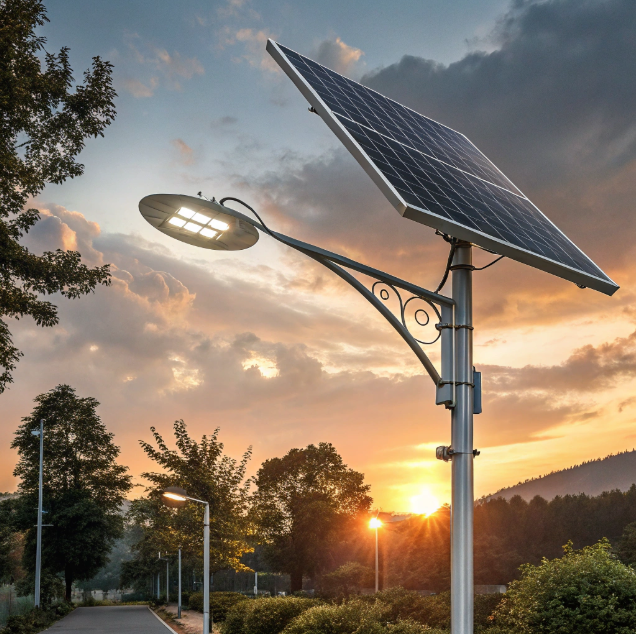Why Is Everyone Ditching the Electrician and Trenching for This All-in-One Solar Light?
by
Why Is Everyone Ditching the Electrician and Trenching for This All-in-One Solar Light?
Tired of costly, time-consuming solar light installations? Imagine a solution that installs in minutes, with no wiring or digging needed.
This all-in-one solar light[^1] integrates panel, battery, and LED in one unit, enabling sub-30-minute pole-top installation with zero trenching, wiring, or electrician fees—perfect for rapid, low-cost deployments.
Transition Paragraph: Let’s explore how this breakthrough technology is reshaping solar lighting—from tender-winning specs[^2] to real-world impact.
For Government Contractors: The "Tender-Winning" Spec Sheet for Solar Street Lights that Balances Price and Performance.
Struggling to meet strict tender requirements while staying within budget? Achieving that balance feels impossible—until now.
A winning tender spec combines high lumen output (≥6000LM), reliable battery backup (3-5 rainy days), smart motion sensing[^3], and robust IP65/IP67 ratings—all at a competitive price point validated by real-world case studies.
Breaking Down the “Tender-Winning” Formula
For government projects, balancing cost and performance is non-negotiable. Key specifications must align with both functional needs and procurement guidelines. Below are the critical specs that meet tender demands without sacrificing quality or driving up expenses:
| Specification | Minimum Requirement | Why It Matters |
|---|---|---|
| Lumen Output | 6000–12000 LM | Ensures adequate visibility and safety |
| Battery Backup | 3–5 days (no sun) | Guarantees reliability in poor weather |
| IP Rating | IP65 (dust/jet-proof) or IP67 (immersion-proof) | Determines durability in harsh climates |
| Smart Features | Motion sensing, dimming modes | Redenergy consumption and enhances usability |
| Warranty | 5+ years | Lowers long-term maintenance costs |
Incorporating these specs not only meets tender demands but also future-proofs installations. For example, projects in East Africa using lights with these features saw a 40% reduction in post-installation complaints and longer service life.
IP65 vs. IP67: Why This Tiny Difference Means Everything in a Tropical Downpour.
Worried your solar lights will fail when the monsoon hits? That one-digit difference could save your project from disaster.
IP65 protects against heavy rain and dust, while IP67 withstands temporary immersion—making it essential for flood-prone or coastal areas where water exposure is extreme.
Going Deeper: Where and Why the Rating Matters
The difference between IP65 and IP67 isn’t just technical—it’s practical. IP65-rated lights are resistant to water jets and dust, suitable for most rainy environments. However, in regions with frequent flooding or tidal influences, IP67’s ability to handle submersion up to 1 meter for 30 minutes becomes critical.
Consider these scenarios:
- IP65: Ideal for urban streets, parking lots, and regions with seasonal rain.
- IP67: Necessary for coastal roads, riverbanks, or tropical zones with flash floods.
Ignoring this distinction can lead to premature failure, increased maintenance costs, and safety risks. For instance, a project in Kerala, India, saw a 90% survival rate for IP67 lights during monsoons, while IP65 models failed at twice the rate.
From "No-Go Zone" to Community Hub: A Kenyan Case Study on How Solar Street Lights Reduced Crime by 60%.
Can lighting truly transform community safety[^4]? In Kisumu, Kenya, the results were staggering—and the data proves it.
Solar street lights in Kisumu reduced nighttime crime by 60%, increased social activity after dark, and improved perceived safety, turning neglected areas into vibrant community spaces.
Lighting the Path to Transformation
The installation of 150 solar lights in the Nyalenda informal settlement led to measurable social and economic benefits:
- Crime Reduction: Armed robberies and assaults dropped significantly due to improved visibility and increased foot traffic.
- Economic Activity: Small vendors extended operating hours, boosting local income.
- Community Engagement: Public spaces became usable at night, encouraging gatherings and cultural events.
This case underscores how solar lighting isn’t just about illumination—it’s about empowerment, safety, and sustainable development.
Conclusion
Solar lighting innovations are eliminating traditional barriers—making clean, safe light accessible, affordable, and rapidly deployable worldwide.
[^1]: Discover how all-in-one solar lights can simplify installation and reduce costs, making them a smart choice for your lighting needs.
[^2]: Learn about the essential specs that can help you win government contracts while ensuring quality and performance.
[^3]: Find out how smart motion sensing can enhance energy efficiency and usability in solar lighting solutions.
[^4]: Discover real-world examples of how solar lighting can transform neighborhoods and reduce crime rates.
Popular Posts
You may also be interested in:




